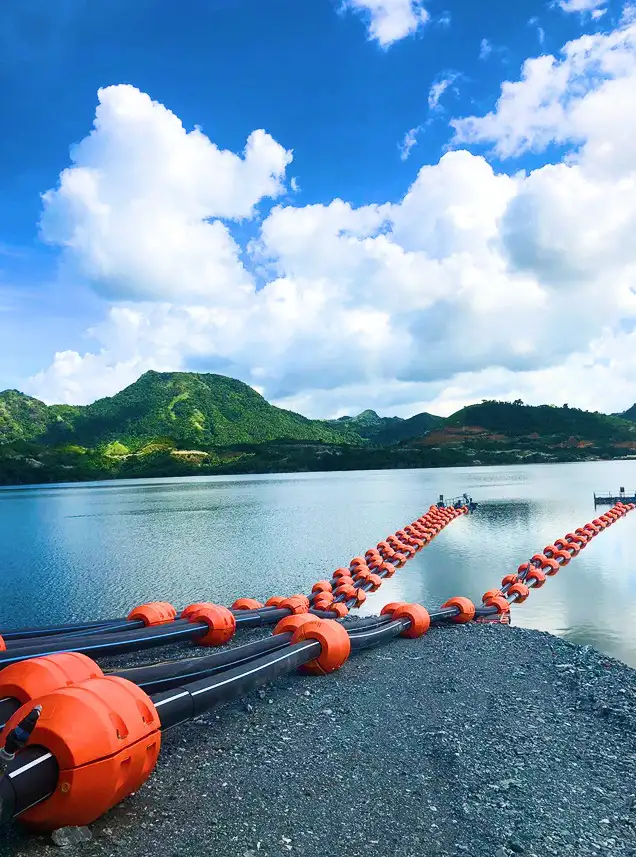
Floater rings are a critical component in many dredging projects, enabling the efficient and safe transport of dredged material and contributing to the overall success of waterway maintenance, construction, and environmental improvement initiatives.
Dredging is an essential process for maintaining and improving waterways, ports, and other aquatic environments. It involves the excavation and removal of sediment, silt, sand, and other materials from the bottom of rivers, lakes, harbors, and oceans. This process is crucial for various reasons, including:
Maintaining Navigational Depths: Over time, sediment accumulates, reducing the depth of channels and berths, making them impassable for larger vessels. Dredging ensures safe passage for ships and boats, supporting global trade and transportation.
Land Reclamation and Construction: Dredged material can be used to create new land for development, coastal protection, or to establish foundations for bridges, docks, and other infrastructure.
Environmental Remediation: Dredging helps remove polluted sediments and debris, improving water quality, restoring aquatic ecosystems, and mitigating flood risks.
Resource Extraction: In some cases, dredging is performed to recover valuable minerals, sand, or gravel from the seabed for construction or other industries.
Dredging operations often involve the use of long pipelines to transport the excavated material (slurry) from the dredger to a disposal or reclamation site. When these pipelines are laid across water bodies, they need to be supported to prevent them from sinking and to maintain efficient flow. This is where floater rings, also known as dredge floaters or pipe floats, come into play.
Floater rings are specialized buoyancy devices designed to keep dredging pipelines afloat. They are typically made from durable, wear-resistant materials like medium-density polyethylene (MDPE) or high-density polyethylene (HDPE), often filled with closed-cell polyurethane (PU) foam for added buoyancy and impact resistance.
Buoyancy: Their primary function is to provide sufficient buoyancy to keep the heavy dredging pipelines on the water's surface, ensuring the continuous and efficient transfer of dredged material.
Flexibility and Impact Resistance: Designed to withstand the harsh conditions of marine environments, including waves, currents, and potential impacts from vessels or debris. The flexible material prevents cracking or damage.
Corrosion Resistance: Unlike traditional steel pontoons, plastic floater rings are highly resistant to corrosion from saltwater, chemicals, and other contaminants, leading to a longer service life.
Lightweight and Easy Installation: Their relatively light weight makes them easy to install, handle, and transport, reducing labor costs and overall project expenses.
Cost-Effectiveness: Over their lifespan, plastic floater rings often prove more economical than steel alternatives due to their durability, lower maintenance requirements, and ease of deployment.
Visibility: Often manufactured in bright colors (e.g., orange, yellow) to enhance visibility on the water, serving as a caution marker for other marine traffic.
Environmental Friendliness: Modern floater rings are designed to be environmentally conscious, often made from recyclable materials and not polluting the water quality.
